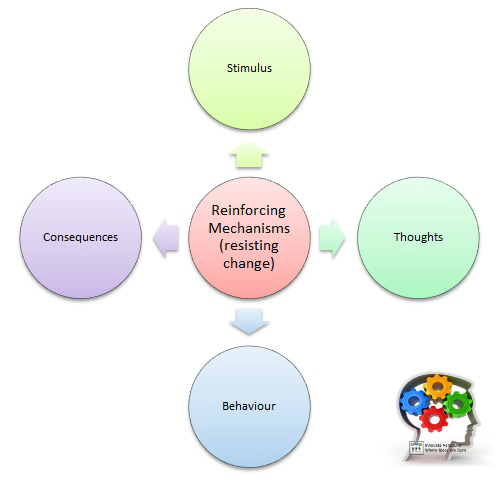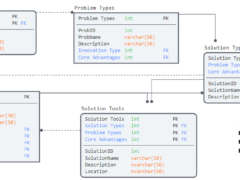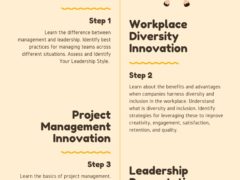Toxic business cultures resist behaviour change due to the abundant supply of reinforcing mechanisms that keep up unhealthy behaviours and the relative absence of healthy factors to ease change. The study of nature finds complex systems infused with self-replicating fractals (patterns). Similar to the replication of cells healthy systems similarly replicate healthy building blocks to maintain homeostasis. The reverse is also true in that unhealthy systems replicate unhealthy building blocks that continue to maintain that system.

The challenge this presents to organizations seeking growth, improvement, and learning changes cannot be understated. Vulnerabilities in the health of a system will interfere with the functioning of that system, and seek to maintain homeostasis as change factors are introduced.
Examples:
- Struggling Individual Performance = often leads to resistance to feedback
- Struggling Organizational Performance = often leads to resistance to transparency and innovation
- Individuals Struggling with Feedback = often leads to resistance to supervision
- Organization’s Struggling with Feedback = often leads to resistance to course correction and employee engagement
- Resistance to Change = often leads to conflicting priorities, misalignment of efforts & values, and the deterioration of key relationships
As more and more destructive elements are introduced into the system the ability to leverage opportunities for growth, learning, and improvement decreases. In fact stakeholders of the current system will resist changes as mistrust and fear increase. The creation of healthy behaviour changes requires the introduction and reinforcement of healthy systems components. The priorities for where & when change should be championed are often determined by the following:
- Perception of Benefit
- Perception of Risk
- Perception of Loss
- Investment in the Individual Status Quo (whether this is aligned with the customer’s needs)
- Investment in the Vision of the New Status Quo (accomplished through increased alignment, learning, and growth).
The study of ‘evolutionary theory’ finds abundant arguments for the benefits of adaptation. Adaptation is not only argued as necessary for biological survival it is also help align the business with opportunities, industry benchmarks, and stakeholder’s evolving priorities. Organizations that are able to effectively introduce healthy system components are not only more likely to be agile and responsive to environmental changes – but – also be happy and engaged places to work. Leadership has a key responsibility for role modelling these behaviours.
The Behaviour Change Canvas that follows can be used by organizations to find factors contributing to existing issues, find and evaluate opportunities for change, and effectively execute available resources, strategies, and tools to improve the health of the system.

One way to introduce improvement in the system is to target the mechanisms that reinforce it. The organization’s human resources (employees) have a significant influence over what inputs are added to the system and what goals (or consequences) are pursued (or result). The stimulus (or trigger) produces different thoughts, behaviours, and thus consequences in different systems. Different people also will respond differently based on their experience, thoughts, and skills to cope with complex and unpleasant situations. But whether or not a differential, and thus positive, response is reinforced will depend on the business culture (and resources, etc.). Leadership thus has a key responsibility for role modelling the desired behaviours.
Individuals and the business are thus reliant on one another for building healthy systems.
The following Behaviour Change Canvas has an example of the questions each organization/team will need to answer to improve the health of the system:
Positive behaviours need positive reinforcement to be maintained AND generalized to new situations. Administrative tools, policies, and resources need to be both supportive AND aligned with the vision of building a healthy system. Similarly, the individual AND the business need to take responsibility for their actions (and reactions) that give to the health of the system.
In a toxic climate one of the hardest things to carry out is working towards stopping the ‘blame game,’ and accepting individual responsibility for the introduction and maintenance of the existing system. Only then can change be possible.
Feedback mechanisms are crucial for building alignment, consensus, and structured momentum throughout the change management initiative. Involving staff in the process of designing, evaluating, and implementing the behaviour/cultural change plan will often be one of the hardest things, and yet one of the most productive efforts, pursued in a change management initiative. As time move forward coworkers become more trusting, sharing, and ambitious in their goals.
How is your organization introducing changes to improve the overall health of the system? Share your comments below.
Travis Barker, MPA GCPM
Innovate Vancouver
http://twitter.com/innovatevan
Innovate Vancouver is a business development & consulting service and technology startup located in Vancouver, BC. Contact Innovate Vancouver to help with your new project. Innovate Vancouver also gives back to the community through business consulting services. Contact us for more details.
Reference:





